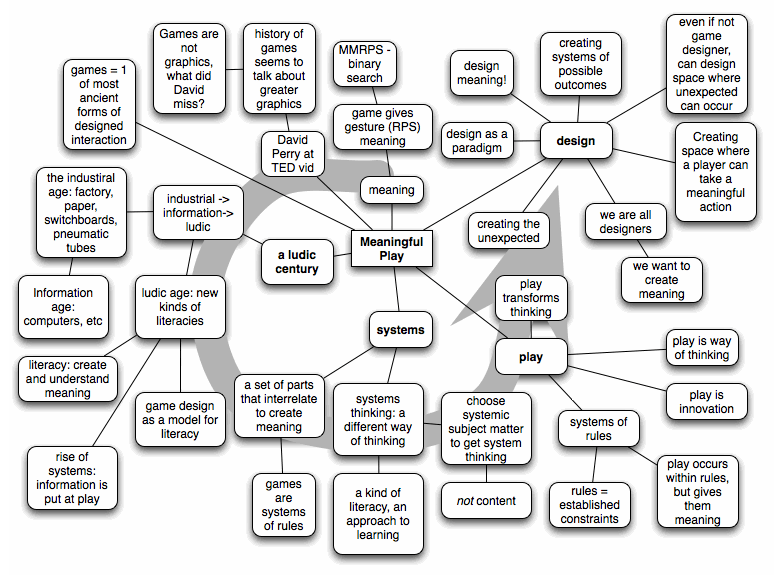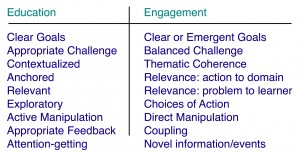The Learning Circuits Blog Big Question of the Month for May is “What will workplace learning technology look like in 2015?” This is a tough question for me, because I tend to see what could be the workplace tech if we really took advantage of the opportunities. Consequently, my predictions tend to be optimistic, as the real world has a way of not moving near as fast as one could wish. Still, I actually prefer to think on what could be the possibilities, as it’s more inspiring. Maybe I’ll answer both.
T he opportunities on the table are immense. Mobile technologies are taking off, we’re getting real power in technology standards (and still some hiccups), and we’re crossing boundaries between reality and virtual worlds.
he opportunities on the table are immense. Mobile technologies are taking off, we’re getting real power in technology standards (and still some hiccups), and we’re crossing boundaries between reality and virtual worlds.
Smartphones are on the rise, and new portable devices (e.g. tablets) are expanding the possibilities. It’s highly plausible that we’ll have expanded the performance ecosystem to be location independent, and be providing the 4C’s in ways that allow powerful access, sharing, and collaboration.
Virtual worlds provide a different approach, where instead of augmenting reality, we’re re-contextualized in an artificial but enhanced space where capabilities that don’t exist in the real world are available to us. We can build 3D models, communicate in micro or macro spaces (within molecules or between galaxies), and open up the hidden components of real spaces. Again, we can leverage the 4C’s to go beyond courses to a fuller definition of learning.
This can be facilitated by standards. If HTML 5 coalesces as it should, we can and should be delivering rich interactivity, not just content delivery. Similarly, if we can move beyond ebook standards to capture interactivity, we can make easy marketplaces to deliver capability that is available regardless of connectivity. Virtual world standards are emerging too, and hopefully some convergence will have happened by 2015!
 Also, if our backend systems progress as they can (and should), we should be able to move to Web 3.0 where instead of producers or users, the systems generate content. We can use semantic technologies to do customized delivery of information, pulling together what we know about the learner (e.g. from a competency map or learning path), about the content available (from a content model), and their tasks (from a job role) and their current context (their location and what’s on their calendar) to serve up just the right information.
Also, if our backend systems progress as they can (and should), we should be able to move to Web 3.0 where instead of producers or users, the systems generate content. We can use semantic technologies to do customized delivery of information, pulling together what we know about the learner (e.g. from a competency map or learning path), about the content available (from a content model), and their tasks (from a job role) and their current context (their location and what’s on their calendar) to serve up just the right information.
This is all possible. What’s probable? We’ll have seen major progress in mobile tools, whether companies wake up or it’s just individual initiative to accessorize the brain. Virtual worlds will also be more prevalent, though not ubiquitous. Social media systems will be much more integrated into the workflow, and LMS will have become just a cog in the ecosystem, not the ecosystem. The social media will be available whether you’re in-world, in the world, or at your desk.
Semantics, however, are likely to still be nebulous. People are beginning to take advantage of powerful content systems leveraging tagging and flexible delivery, but it’s still embryonic. There’ll be more pockets, but it won’t be a groundswell yet.
I’m probably still be optimistic, but a guy can hope, and of course strive to make it so. This is what I do and where I like to play. I welcome more playmates in this great playground of opportunity.

 At core was an alignment between what makes effective learning practice, and what makes engaging experiences. Looking across educational theories, repeated elements emerge. Similarly with experience design. It turns that they perfectly align. If you recognize that, and can execute against it, your learning will be greater than the sum of the parts, and will both seriously engage and truly educate. Learning can, and should, be hard fun!
At core was an alignment between what makes effective learning practice, and what makes engaging experiences. Looking across educational theories, repeated elements emerge. Similarly with experience design. It turns that they perfectly align. If you recognize that, and can execute against it, your learning will be greater than the sum of the parts, and will both seriously engage and truly educate. Learning can, and should, be hard fun!